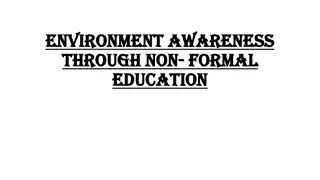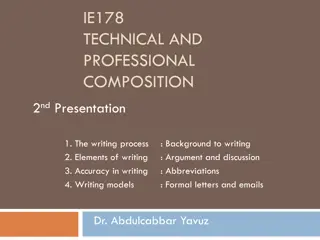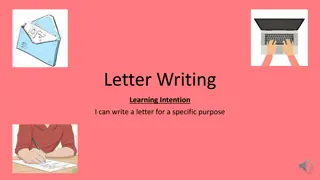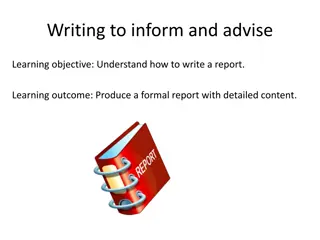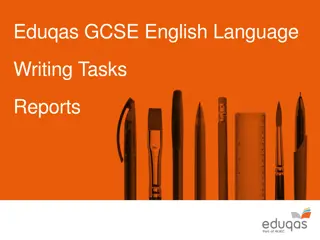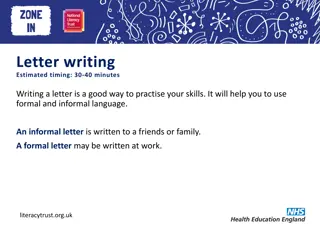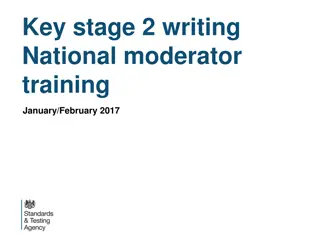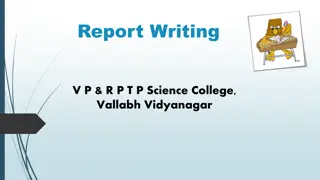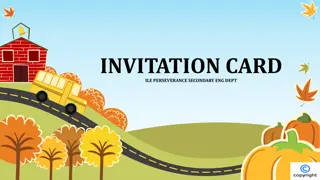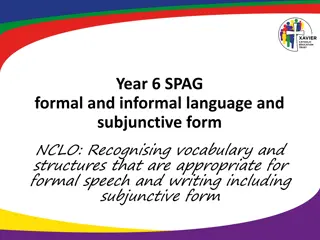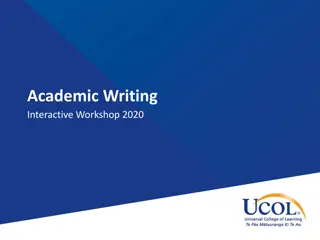Comprehensive Guide to Formal Report Writing
Understanding the nuances of formal report writing is crucial for effective communication in an organizational setting. This detailed guide covers essential aspects such as types of reports, structure, planning, common mistakes, and the significance of report writing. Discover how to create impactful reports that aid in decision-making and problem-solving within organizations.
Download Presentation

Please find below an Image/Link to download the presentation.
The content on the website is provided AS IS for your information and personal use only. It may not be sold, licensed, or shared on other websites without obtaining consent from the author.If you encounter any issues during the download, it is possible that the publisher has removed the file from their server.
You are allowed to download the files provided on this website for personal or commercial use, subject to the condition that they are used lawfully. All files are the property of their respective owners.
The content on the website is provided AS IS for your information and personal use only. It may not be sold, licensed, or shared on other websites without obtaining consent from the author.
E N D
Presentation Transcript
FORMAL REPORT WRITING Presented By: Tehmina Farrukh Topic: Long Report Writing
Agenda Introduction Effective report writing Types of report Structure of report Planning of report Features of report writing Common mistakes in report writing Prospectus Structure Importance of report writing Conclusion
It is a study of facts & information It is formed in a structured format Based on observation and analysis It helps the management in an organization for making plans & solving issues in the organization It is an outcome of an any event
An effective report can be written going through the following steps- Determine the objective of the report, i.e., identify the problem Collect the required material (facts) for the report Study and examine the facts gathered Plan the facts for the report
Count. Prepare an outline for the report, i.e., draft the report Edit the drafted report Distribute the draft report to the advisory team and ask for feedback and recommendations
Types of report Research Report Business Report Scientific Report Routine Report Investigation Report Project Report Director s Report
Structure of report Title page Table of Contents Abbreviations and/or glossary Acknowledgements Abstract Introduction Body Conclusion Bibliography
Planning of Report As in all writing assignments, it's crucial to analyse the task carefully Who is the report for? Why do they want it? What do they need to know?
Then start planning: Think about structure and format Check your guidelines! Have you been given a suggested structure or format? Think how to present your information most clearly.
Plan the writing process: Think about what you already know Brainstorm. Jot down notes or make a mind map How will you find the information you need? Make a time plan allowing for each preparation and writing stage. Reports usually have important deadlines!
Organise your information: Consider the sources you will need Decide which key information should go in which section Organise your information as you go along Note your references as you go along
Features of good Report Writing It has a clear thoughts It is complete & self-explanatory It is comprehensive but compact It is accurate in all aspects It has suitable format for readers
count.. It support facts & is factual It has an impersonal style It has proper date & signature It has a reference to relevant details It follows an impartial approach
count.. It has all essential technical details It is presented in a lucid style It is a reliable document It is arranged in a logical manner
Conclusion Reports in written form are useful for future reference. Reports provide adequate and correct information as well as statistical data to management and helps in decision making .a report provides information of unknown facts i.e new ideas new vision new solution to problem new research about a particular matter. a report provides valuable information of all sectors in the business hence report are useful for solving the problem of various department. Report acts as an important and effective internal tool of communication.








